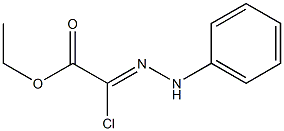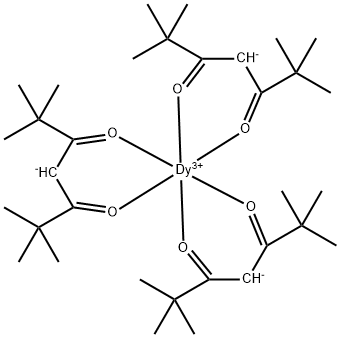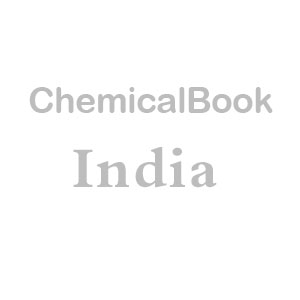LOCUST BEAN GUM
Synonym(s):Galactomannan polysaccharide;Gum, locust bean;Manno-galactan (main component)
- CAS NO.:9000-40-2
- Empirical Formula: C10H11ClN2O2
- Molecular Weight: 226.65954
- MDL number: MFCD00131257
- EINECS: 232-541-5
- Update Date: 2024-12-18 14:15:30

What is LOCUST BEAN GUM?
Chemical properties
branched, nonionic polymer.
Chemical properties
Ceratonia occurs as a yellow-green or white colored powder. Although odorless and tasteless in the dry powder form, ceratonia acquires a leguminous taste when boiled in water.
Chemical properties
Carob bean gum is a natural product obtained from the endosperm of milled seeds from the fruit pod of C. siliqua. Carob bean gum is obtained from the macerated endosperm of the seeds of the fruit pod of the carob tree. This endosperm, comprising 42 to 46% of the kernel, contains virtually all of the galactomannan present in the seed. Galactomannan is not found in the kibble. Carob bean gum is used as a food stabilizer and thickener, a flavor and/or flavor modifier, an emulsifier, a texturizer and a solvent/ carrier/encapsulating agent.
Physical properties
It is a white to yellowish-white powder. It is dispersible in either hot or cold water, forming a solution having a pH between 5.4 and 7.0, which may be converted to gel by the addition of small amounts of sodium borate.
The Uses of LOCUST BEAN GUM
Locust bean gum (LBG, galactomannan polysaccharide) from Ceratonia siliqua seeds may be used as a substrate to help identify, differentiate and characterize mannanase(s), such as the β-Mannanases (EC 3.2.1.78). LBG may be used in the development of drug delivery devices. LBG may be used to study its properties as a protective agent on both eucalyptus and microcrystalline cellulose destruction of crystallinity by ball milling. LBG may be used to study its properties as a food additive that reduces spoilage caused by Aspergillus flavus. LBG may be used as a starting material for the organic synthesis of hyperbranched N-glycan core structures.
The Uses of LOCUST BEAN GUM
Locust Bean Gum is a gum that is a galactomannan obtained from the plant seed from the locust bean tree known as ceratonia siliqua. it has a mannose:galactose ratio of approximately 4:1. its properties include swelling partially in cold water but requiring heating to approximately 82°c for complete solubility. it provides high viscos- ity, forms gels with xanthan gum upon heating and cooling of the solution, and functions as a water binder. it can make agar or car- rageenan gels more elastic. its uses include processed cheese, ice cream, bakery products, soups, and pies. typical usage level is 0.1– 1.0%. it is also called carob gum or saint john’s bread, and is scien- tifically called carubin.
Production Methods
Ceratonia is a naturally occurring material obtained from the ground endosperms separated from the seeds of the locust bean tree, Ceratonia siliqua (Leguminosae). The tree is indigenous to southern Europe and the Mediterranean region.
General Description
Off-white to yellow-green powder. Odorless and tasteless, but acquires a leguminous taste when boiled in water.
Air & Water Reactions
Insoluble in water.
Health Hazard
ACUTE/CHRONIC HAZARDS: When heated to decomposition LOCUST BEAN GUM emits acrid smoke and fumes.
Fire Hazard
Flash point data for LOCUST BEAN GUM are not available. However, LOCUST BEAN GUM is probably combustible.
Pharmaceutical Applications
Ceratonia is a naturally occurring material generally used as a
substitute for tragacanth or other similar gums. A ceratonia
mucilage that is slightly more viscous than tragacanth mucilage
may be prepared by boiling 1.0–1.5% of powdered ceratonia with
water. As a viscosity-increasing agent, ceratonia is said to be five
times as effective as starch and twice as effective as tragacanth.
Ceratonia has also been used as a tablet binder and is used in oral
controlled-release drug delivery systems approved in Europe and
the USA.
Ceratonia is widely used as a binder, thickening agent, and
stabilizing agent in the cosmetics and food industry. In foods,
0.15–0.75% is used. Therapeutically, ceratonia mucilage is used
orally in adults and children to regulate intestinal function.
Safety Profile
Mildly toxic by ingestion. When heated to decomposition it emits acrid smoke and irritating fumes.
Safety
Ceratonia is generally regarded as an essentially noncarcinogenic,
nontoxic and nonirritant material. Therapeutically, it has been used
in oral formulations for the control of vomiting and diarrhea in
adults and children; 20–40 g daily in adults has been used dispersed
in liquid. As an excipient, ceratonia is used in oral controlledrelease
formulations approved in Europe and the USA.
Ceratonia is also widely used in food products. The WHO has
not specified an acceptable total daily intake for ceratonia as the
total daily intake arising from its use at the levels necessary to
achieve the desired effect, and from its acceptable background in
food, was not considered to represent a hazard to health.
Ceratonia hypersensitivity has been reported, in a single case
report, in an infant. However, ceratonia is said to be nonallergenic
in children with known allergy to peanuts.
LD50 (hamster, oral): 10.0 g/kg
LD50 (mouse, oral): 13.0 g/kg
LD50 (rabbit, oral): 9.1 g/kg
LD50 (rat, oral): 13.0 g/kg
storage
The bulk material should be stored in a well-closed container in a cool, dry place. Ceratonia loses not more than 15% of its weight on drying.
Incompatibilities
The viscosity of xanthan gum solutions is increased in the presence of ceratonia. This interaction is used synergistically in controlledrelease drug delivery systems.
Regulatory Status
GRAS listed. Accepted for use in Europe as a food additive. In Europe and the USA, ceratonia has been used in oral tablet formulations.
Properties of LOCUST BEAN GUM
| Melting point: | >200°C (dec.) |
| FEMA | 2648 | LOCUST GUM (CERATONIA SILIQUA L.) |
| storage temp. | Sealed in dry,Room Temperature |
| solubility | Ceratonia is dispersible in hot water, forming a sol
having a pH 5.4–7.0 that may be converted to a gel by the
addition of small amounts of sodium borate. In cold water,
ceratonia hydrates very slowly and incompletely. Ceratonia is
practically insoluble in ethanol. |
| form | Solid |
| color | Off-White to Light Beige |
| Odor | at 100.00 %. fruity raisin jammy brown cocoa chocolate bready coffee jammy brandy |
| Stability: | Hygroscopic |
| EPA Substance Registry System | Carob gum (9000-40-2) |
Safety information for LOCUST BEAN GUM
Computed Descriptors for LOCUST BEAN GUM
LOCUST BEAN GUM manufacturer
Altrafine Gums
Quality Speciality Chemicals LLP
New Products
(S)-3-Aminobutanenitrile hydrochloride 4-Methylphenylacetic acid N-Boc-D-alaninol N-BOC-D/L-ALANINOL Tert-butyl bis(2-chloroethyl)carbamate 3-Morpholino-1-(4-nitrophenyl)-5,6-dihydropyridin- 2(1H)-one Furan-2,5-Dicarboxylic Acid Tropic acid 1-Bromo-3,5-Di-Tert-Butylbenzene S-2-CHLORO PROPIONIC ACID ETHYL ISOCYANOACETATE 2-Bromo-1,3-Bis(Dimethylamino)Trimethinium Hexafluorophosphate 4-IODO BENZOIC ACID 3-NITRO-2-METHYL ANILINE 1-(2,4-DICHLOROPHENYL) ETHANAMINE (2-Hydroxyphenyl)acetonitrile 4-Bromopyrazole 2-(Cyanocyclohexyl)acetic acid 4-methoxy-3,5-dinitropyridine 1-(4-(aminomethyl)benzyl)urea hydrochloride 2-aminopropyl benzoate hydrochloride diethyl 2-(2-((tertbutoxycarbonyl)amino) ethyl)malonate tert-butyl 4- (ureidomethyl)benzylcarbamate Ethyl-2-chloro((4-methoxyphenyl)hydrazono)acetateRelated products of tetrahydrofuran








You may like
-
 9000-40-2 Locust bean gum 98%View Details
9000-40-2 Locust bean gum 98%View Details
9000-40-2 -
 9000-40-2 98%View Details
9000-40-2 98%View Details
9000-40-2 -
 1975-50-4 98%View Details
1975-50-4 98%View Details
1975-50-4 -
 2-HYDROXY BENZYL ALCOHOL 98%View Details
2-HYDROXY BENZYL ALCOHOL 98%View Details
90-01-7 -
 2-Chloro-1,3-Bis(Dimethylamino)Trimethinium Hexafluorophosphate 221615-75-4 98%View Details
2-Chloro-1,3-Bis(Dimethylamino)Trimethinium Hexafluorophosphate 221615-75-4 98%View Details
221615-75-4 -
 61397-56-6 CIS BROMO BENZOATE 98%View Details
61397-56-6 CIS BROMO BENZOATE 98%View Details
61397-56-6 -
 14714-50-2 (2-Hydroxyphenyl)acetonitrile 98+View Details
14714-50-2 (2-Hydroxyphenyl)acetonitrile 98+View Details
14714-50-2 -
 118753-70-1 98+View Details
118753-70-1 98+View Details
118753-70-1